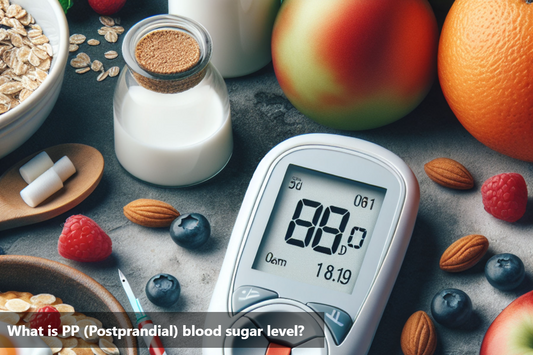Understanding Low Blood Sugar Levels
Low blood sugar, also known as hypoglycemia, occurs when blood glucose levels drop below normal. It's important to understand what low blood sugar is and how it can affect our body. Symptoms of low blood sugar include shakiness, dizziness, sweating, confusion, and in severe cases, loss of consciousness. Factors contributing to low blood sugar levels include skipping meals, excessive physical activity, excessive alcohol consumption, and certain medications.
When facing low blood sugar episodes, it's crucial to act promptly. Consuming sugary foods or drinks can help raise blood sugar levels quickly. Monitoring blood sugar levels and resting are also essential steps to manage hypoglycemia effectively. It's vital to be prepared and have fast-acting glucose sources on hand to address low blood sugar promptly.
Understanding how to increase low blood sugar levels is key in managing hypoglycemia at home. Implementing dietary changes, using glucose tablets or gels, and monitoring blood sugar regularly can aid in treating low blood sugar episodes effectively. By staying informed and taking necessary precautions, one can effectively address low blood sugar and prevent complications.
Immediate Steps to Take When Blood Sugar is Low
When blood sugar levels drop, it's crucial to take immediate steps to address the situation and avoid complications. Here are some quick tips on what to do when experiencing low blood sugar:
Consume Sugary Foods or Drinks: When you feel your blood sugar dropping, it's essential to consume fast-acting carbohydrates like fruit juice, a tablespoon of honey, or glucose gels. These can quickly raise your blood sugar levels.
Check Blood Sugar Levels: Monitoring your blood sugar levels is essential to understand the severity of the situation. Use a glucose meter to accurately measure your blood sugar levels and determine if they are within a safe range.
Rest and Relax: If you're experiencing low blood sugar, find a comfortable place to sit or lie down. Resting can help your body conserve energy and focus on raising your blood sugar levels.
Avoid Overeating: While it's vital to consume sugar to raise your blood sugar levels, avoid overeating. Consuming too much sugar can cause your blood sugar levels to spike rapidly, leading to further complications.
Remember, knowing how to increase low blood sugar levels and promptly taking action can help you manage this condition effectively. By following these steps, you can address low blood sugar episodes promptly and ensure your well-being.
Ways to Treat Low Blood Sugar at Home
Dietary Changes:
Consume Fast-Acting Carbohydrates: Options include fruit juice, regular soda, or glucose tablets to quickly raise blood sugar levels.
Balanced Snack: Combine carbohydrates and proteins to sustain blood sugar levels over a longer period.
Utilize Glucose Tablets or Gels:
Convenient and Quick: These products are quickly absorbed by the body and provide a measured amount of glucose, aiding in precise regulation of blood sugar levels.
Accessibility: Keep these items readily available for easy access during low blood sugar episodes.
Regular Monitoring of Blood Sugar Levels:
Consistent Checks: Regularly monitor blood sugar levels to track patterns and identify triggers for low blood sugar.
Adjust Treatment Plan: Use the data to make informed decisions and adjust the treatment plan as necessary.
Comprehensive Approach: Combining dietary adjustments, glucose products, and vigilant monitoring is key to effectively managing low blood sugar levels at home.
Confidence and Well-Being: These steps help individuals confidently navigate low blood sugar episodes and ensure their overall well-being
Preventing Low Blood Sugar Episodes
Maintaining a Balanced Diet Regularly monitoring blood sugar levels is crucial to prevent potential low blood sugar episodes. By keeping track of your blood sugar levels, you can intervene before it drops to dangerous levels, ensuring your body receives the necessary glucose to function optimally.
Incorporating Healthy Carbohydrates Ensuring your diet includes healthy carbohydrates like whole grains, fruits, and vegetables can help regulate blood sugar levels more effectively. These carbohydrates provide a steady release of glucose into your bloodstream, preventing sudden drops in sugar levels.
Distribute Meals Throughout the Day Instead of consuming large meals, opt for smaller, more frequent meals throughout the day. This can help maintain a steady supply of glucose to your body and prevent drastic fluctuations in blood sugar levels.
Stay Hydrated Dehydration can exacerbate blood sugar imbalances, leading to potential episodes of low blood sugar. Make sure to drink an adequate amount of water throughout the day to support your body's overall health and blood sugar regulation.
Engage in Regular Physical Activity Regular exercise can help improve insulin sensitivity and blood sugar control. Incorporating activities like walking, jogging, or yoga into your daily routine can be beneficial in preventing low blood sugar episodes.
Consult Your Healthcare Provider Communicating openly with your healthcare provider about your blood sugar management is essential. They can provide personalized guidance, support, and adjustments to your treatment plan to help prevent low blood sugar episodes effectively.
Bottomline
It is crucial to understand how to effectively manage low blood sugar levels at home to prevent complications. By recognizing the symptoms of low blood sugar and taking immediate action, individuals can ensure their well-being and safety. Additionally, we have discussed specific methods to treat low blood sugar at home, including making dietary changes, using glucose tablets or gels, and emphasizing the importance of continuous monitoring to track blood sugar levels accurately.
Moving forward, it is essential to focus on prevention by maintaining a balanced diet, staying in communication with healthcare providers, and being proactive in managing blood sugar levels. Taking these preventive measures can help reduce the occurrence of low blood sugar episodes and promote overall well-being.
This Blog post is an initiative by DiabeSmart, to provide accurate and Nutritionist / Doctor approved information related to Diabetes. DiabeSmart is India's first Food brand designed specifically for Diabetics, that has been clinically tested on Diabetics and Pre-Diabetics to deliver 55% - 70% lower Sugar spikes. DiabeSmart is part of Lo! Foods - India's leading brand for Everyday Functional Health foods.











